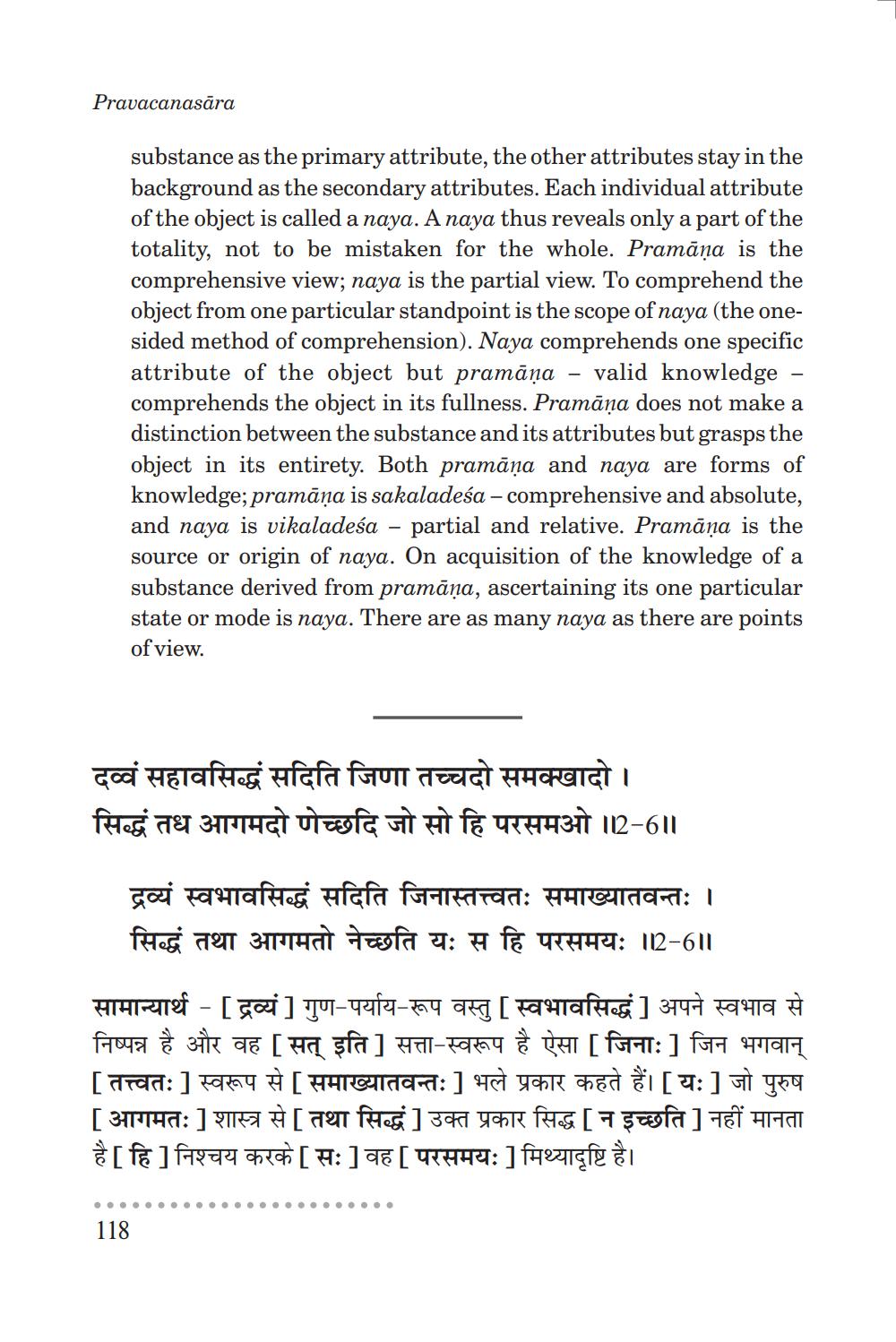________________
Pravacanasāra
substance as the primary attribute, the other attributes stay in the background as the secondary attributes. Each individual attribute of the object is called a naya. A naya thus reveals only a part of the totality, not to be mistaken for the whole. Pramāņa is the comprehensive view; naya is the partial view. To comprehend the object from one particular standpoint is the scope of naya (the onesided method of comprehension). Naya comprehends one specific attribute of the object but pramāna - valid knowledge – comprehends the object in its fullness. Pramāņa does not make a distinction between the substance and its attributes but grasps the object in its entirety. Both pramāna and naya are forms of knowledge; pramāna is sakaladesa - comprehensive and absolute, and naya is vikaladeśa - partial and relative. Pramāṇa is the source or origin of naya. On acquisition of the knowledge of a substance derived from pramāņa, ascertaining its one particular state or mode is naya. There are as many naya as there are points of view.
दव्वं सहावसिद्धं सदिति जिणा तच्चदो समक्खादो। सिद्धं तध आगमदो णेच्छदि जो सो हि परसमओ ॥2-6॥
द्रव्यं स्वभावसिद्धं सदिति जिनास्तत्त्वतः समाख्यातवन्तः । सिद्धं तथा आगमतो नेच्छति यः स हि परसमयः ॥2-6॥
सामान्यार्थ - [द्रव्यं] गुण-पर्याय-रूप वस्तु [स्वभावसिद्धं] अपने स्वभाव से निष्पन्न है और वह [ सत् इति ] सत्ता-स्वरूप है ऐसा [जिनाः ] जिन भगवान् [ तत्त्वतः ] स्वरूप से [ समाख्यातवन्तः ] भले प्रकार कहते हैं। [यः] जो पुरुष [आगमतः] शास्त्र से [ तथा सिद्ध ] उक्त प्रकार सिद्ध [न इच्छति ] नहीं मानता है [ हि ] निश्चय करके [ सः ] वह [ परसमयः ] मिथ्यादृष्टि है।
........................ 118




